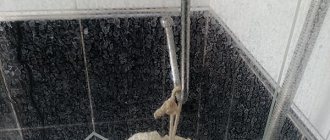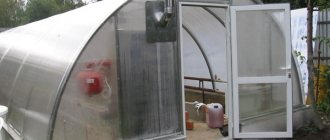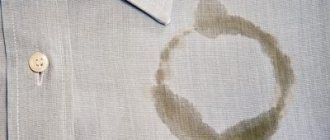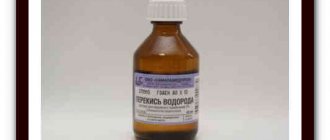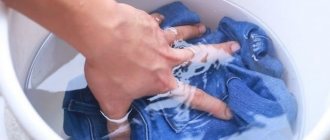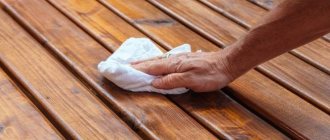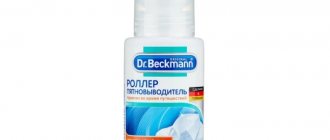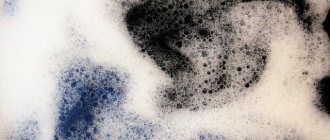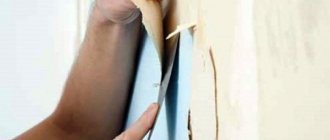Of all types of stains, coffee stains are one of the most insidious. The traces from the invigorating drink are bright, rich and immediately noticeable, especially on light-colored clothing.
Fresh coffee can be cleaned much better, but most of these stains appear in the morning, before work, when there is no time to scrub them off. And old traces are much more difficult to remove.
Dry cleaning is a simple but expensive way to restore your clothes to their former shine. In addition, there is a high probability that the fabric will deteriorate. There is a way out: we try to fight the stain ourselves using one of the suitable means.
How to remove coffee stains at home
It is best to take action immediately. The process for removing different types of stains may differ slightly.
- To remove black coffee from fabric, first of all you need to expose the stained area to a stream of hot water. This will help quickly get rid of tannins. Then the mark is washed away with soap.
- Glycerin or ammonia can help remove café au lait stains.
- Fresh traces of the instant drink will go away after cleaning with regular laundry soap.
Washing each item, depending on the type of fabric, requires a careful approach.
How can you wash instant coffee?
Stubborn stains from an invigorating drink are much more difficult to remove. But if you follow simple tips, you can achieve excellent results. Several proven products will help restore cleanliness to your clothes.
Bleach
From all the variety, it is better to choose an oxygen stain remover, because those containing chlorine or optical are suitable only for white fabric. Before purchasing, you need to read the instructions and consult with the seller in the store.
Boiling water is the first aid in dealing with a fresh stain
You will need to stretch the clothing over a bowl or large pan and then pour boiling water directly onto the stain for a few seconds. The contamination will disappear immediately, but this method is not recommended for delicate material.
Soda or salt
They are almost always available in kitchen cabinets and make coffee well.
You should dilute 60 g (2 tablespoons) of salt and the same amount of soda in 1 liter of warm water. Soak the fabric in the solution for 2 hours, and then wash it in any convenient way.
Glycerol
One winning option is to treat the stain with hot glycerin. The substance is heated in a water bath, and the hot liquid is applied to the area of contamination. Then you should wait 20-30 minutes and wash the product in a machine. A solution of borax in glycerin is also suitable, but after using it, a more thorough wash is required.
Ammonia
Works great on coffee stains. However, it is not suitable for any item, but only for clothes made of thick fabric. It is easy to use - just wet the stain with the liquid and leave for 5-10 minutes, and then wash the product.
Lemon juice
Lemon juice is also a good remedy. You will need to soak the coffee blot in it for 20-30 minutes and then wash it by hand.
Vinegar and salt
A vinegar solution perfectly removes even old stains.
The problem area is treated with a mixture of essence and water in a ratio of 1:3 and left for 2-3 hours. The clothes are then washed with powder. Fresh traces of coffee will be well absorbed by a thick layer of table salt.
How to remove old blood stains from clothes
There are many ways to remove blood stains from clothes. Choose the one you like and start acting.
- Treat the problem area with a detergent (soap, stain remover, dishwashing gel). Rub lightly, then rinse the item. Mix 20 grams of salt in a liter of water. Dip the product into the resulting solution and leave overnight. Then rinse thoroughly.
- Hydrogen peroxide will combat stubborn stains. Thoroughly soak the fabric in the damaged area with the product and place it in a dark place. After 15 minutes, rub gently with a cotton pad. Rinse the product and let it dry.
Attention! Peroxide is a rather aggressive drug, and also has a bleaching property, so it is undesirable for colored fabrics. Good only for dense white matter.
- Add ammonia to the water (liter and 50 ml, respectively), immerse the item in the resulting liquid for an hour. Then rub the problem area and rinse the product.
Advice! Instead of ammonia, use window cleaner if it contains this ingredient. Be aware of the possible lightening of the fabric.
- A simple substance for removing blood stains from clothes is baking soda. Make a paste from it. Apply the mixture to the stain. When the product has dried, brush off the excess and wash the item.
- Prepare a thick paste of water and starch and apply to the contaminated surface. After the mixture has dried, rinse the product thoroughly. The method is suitable even for delicate fabrics.
- Glycerin will help get rid of blood stains. It is slightly heated in a microwave oven or in a water bath, and then the dirt is moistened by lightly rubbing. All that remains is to wash the product.
- Soak the contaminated area with white vinegar, and after a while, immerse it in cold water and wash.
We recommend reading: A tea stain is not a problem - it comes off not the first time, but the second time
Washing clothes
Each type of fabric has its own method.
White clothes
As a rule, restoring purity to white things is a particularly labor-intensive process. But even such a nuisance as coffee stains can be completely removed by following a few steps:
- lay the fabric on a flat surface, place a cotton pad or a clean cloth on the wrong side under the stain;
- Apply ammonia to the problem area, then blot off excess moisture with a napkin;
- wash clothes in a convenient way.
Bright clothes
Bright clothes suffer no less often, and during processing the main thing is to prevent fading:
- mix alcohol and turpentine in a small container in a 50/50 ratio;
- moisten a piece of cotton wool in the solution and carefully (without rubbing) apply the composition to the stain;
- wait an hour, then put it in the washing machine and wash it on a suitable cycle.
Denim
You should remove stains from jeans before washing, since it is much more difficult to remove coffee from wet pants. We do this:
- Apply a little dishwashing detergent (“Fairy”, “Sorti”) directly to the coffee trail;
- give the liquid time to “work”;
- lightly rub the stain with three fingers and wash the jeans.
Synthetics
The stain on synthetics can be cleaned with hydrogen peroxide. For this:
- Using a pipette, apply the product directly to the stain;
- After one hour, rinse with water.
Cotton
You can remove coffee stains from cotton items like this:
- fill a basin with about 10 liters of warm water;
- add 5-6 tablespoons of soda ash;
- Rub the stain thoroughly with laundry soap and place it in the solution;
- After half an hour, wash the clothes by hand.
If the stain is not completely removed, use soap again. Rinse.
The video shows how to remove a coffee stain using hydrogen peroxide.
Some ways to remove grease stains from paper
It is much easier to remove a newly placed stain from paper than an old one. However, old stains can also be removed quite simply.
- Removing grease stains with fresh bread. If a greasy stain has formed on the paper, you need to take fresh black bread, break off a piece of pulp and start rubbing it into the stained area. The bread will begin to absorb the fat. Those pieces that have already absorbed it must be removed. The operation is performed until the contamination completely disappears.
- Fine salt. A greasy stain that appears on paper can be removed using a sheet of paper, an iron and finely ground salt. The stain is sprinkled with fine salt, a clean sheet of paper is placed on top of it and the whole thing is ironed with a slightly heated iron. If the iron is overheated, you can get a photocopier effect - the text of the document will be printed on the paper.
- The clay is white. Purified white clay perfectly removes greasy stains. Important: white clay can be bought at a pharmacy. Wet clay is applied to the area of contamination and left there until completely dry. After this, the clay is carefully removed.
- Chalk. It acts as a kind of analogue of salt. The stain is sprinkled with ground chalk, covered with a clean sheet of paper, preferably white, and ironed on low heat.
- Cleaning wallpaper from greasy stains can be done with an iron and clean paper. A small clarification - the wallpaper must be paper. The paper used to cover the stain becomes saturated with grease quite quickly, so it must be changed frequently.
- Cleaning with gasoline. A sponge is impregnated with it (gasoline must be used without oil impurities, it must be purified), with which the contamination is carefully processed. After this, blot the stain with toilet paper on both sides.
- An old and effective way to remove grease stains involves using starch. A spoonful of starch is diluted in half a glass of water and this liquid is applied to the contaminated area. We wait until the stain dries and remove the dirt and starch with a clean rag.
If suddenly a stain has formed on a document of high importance, then it is better not to remove it. The document may be irreparably damaged.
Removing coffee stains from different surfaces
Unfortunately, a spilled drink can end up anywhere other than your clothing. Especially in a family that practices eating not only in the kitchen.
From the sofa
To remove a stain from a sofa, blot the liquid with a towel or dry cloth. Then take a clean, damp cloth (preferably white) and apply dishwashing detergent to it. Rub the mixture into the upholstery of the sofa until a light foam forms. Use a clean, damp towel to remove water and chemicals and wait for it to dry. Ready.
From the carpet
To clean the carpet, remove the coffee as quickly as possible with a clean cloth. Then spray the stain with plain water. Making a solution: dilute 1 tsp. carpet powder or other mild cleaner in a liter of water. Mix thoroughly.
Apply a little mixture to a corner of the carpet - a place where possible color changes will not be very noticeable.
If everything is in order, you can apply the solution to the stain using a clean cloth (you should simply place it on the coffee trail and leave for 15 minutes). Then wash the mixture off the carpet without using too much liquid. Blot with a cloth (it is not recommended to rub the area).
From paper and documents
Dealing with fabric is not as difficult as dealing with documents or printed work damaged by a drink. It would seem impossible to restore paper doused with a brownish liquid. However, there is hope. Let's prepare a few items:
- iron;
- an old toothbrush;
- large capacity;
- bleach, vinegar;
- white clay powder;
- wax paper.
Mix vinegar and water in a cup. Place the sheet in the solution so that the liquid saturates the stain. We take out the document and carefully blot it with paper napkins.
Alternatively, you can use a 1:3 mixture of bleach and water. A toothbrush is moistened in the solution, which is then used to treat the desired area. This manipulation must be carried out extremely carefully so as not to damage the paper and records.
After the coffee mark has disappeared and the sheet has dried, it is ironed. The main thing is to set a gentle temperature regime.
Take precautions
Chalk . A simple and effective method that will remove greasy stains without scratching the surface of the paper. Grind the chalk into dust and sprinkle on the stain. Spread it so that it lies in an even layer. Place a sheet of paper on top and iron it with an iron. Make sure its temperature is not too high. It is enough to put it on “2”. Shake off the powder that has absorbed the grease from the sheet, add a new one, and continue until the stains completely disappear. If you don't want to use heat, leave the chalk on the paper for a few days. Do not pick off the resulting crust or scratch it with sharp objects. Take a crust of white bread and rub the inside of the surface of the stain.
If after such manipulations stains remain on important documents, you can use heavy artillery in the form of a solution of bleach and water. The ratio of chlorine bleach to water should be 1:3. There is no need to dip the contaminated leaf into this mixture; for this, use a toothbrush, which is used to treat the area specifically damaged by the drink. Mechanical load (i.e. frictional force) should be kept to a minimum to avoid damaging the paper fibers and texture. Excess moisture that has formed along the way is removed using napkins or paper towels.
Paper is a very delicate substance. It is much more fragile than traditional fabric. Poor procedure may result in holes or deformation.
If the stain on the document does not interfere with legibility, leave it. In the process of removing grease or coffee stains, the document may be damaged. As a result, the authenticity will be questionable.
There are no perfect methods for getting rid of unwanted stains. Each has certain disadvantages. So after gasoline there will definitely be an unpleasant odor; solvents may well remove paint along with grease.
You can only get rid of stains little by little. Under no circumstances should you rush. Grease stains do not always go away the first time. Often the procedure has to be repeated and different methods used. Only one of them will bring results. It is not so easy to remove accidental stains of coffee, grease or tea from paper.
White clay . To get rid of greasy stains from a sheet of paper, you need white clay. Combine it with water to form a mixture with a consistency similar to sour cream. Stir the lumps thoroughly. Place a clean cloth or paper under the sheet to be treated, apply the product to the stain and leave until completely dry. Remove any remaining clay using a brush or sponge. Place the sheet between two strips of blotting paper and place it under the press.
After all the procedures, the dry sheet should be placed in the middle between two waxed paper sheets and ironed. In this case, the temperature regime should be either light or medium. Otherwise, the ink may be damaged due to high temperature.
The task of cleaning the document becomes more difficult if the coffee was with milk. To eliminate greasy stains, you will need white dry clay, which is used for medical and cosmetic purposes. From white clay and cold water, in a ratio of one to one, you need to prepare a thick mass and apply the mixture to the stain. After the mixture has completely dried, it can be removed using a sponge (dry) or a napkin. The saved contract or report should be wrapped in a paper towel and allowed to rest for a day.
You can always correct an annoying misunderstanding. The main thing is not to panic or get nervous.
How to remove an old coffee stain
To avoid the need for dry cleaning and remove old stains at home, do the following:
- We take out a basin, soak the item in a solution of soda ash so that the dirt becomes more pliable;
- put the pan on the fire, add 2 tbsp. l. powder stain remover, bring to a boil;
- We take the fabric out of the basin and place it in the bubbling liquid;
- boil for half an hour, then carefully remove with long tongs and rinse.
Coffee stains are not the most difficult stains found on clothing. If you have patience and time, you can get rid of them without leaving even a hint of the former brownish imprint.
